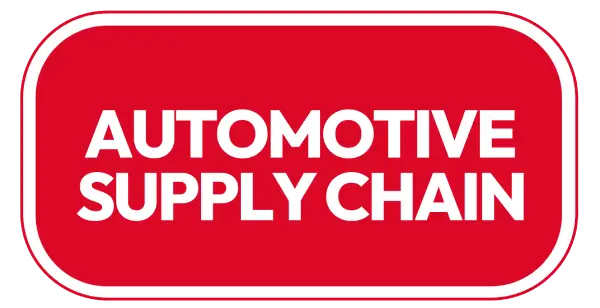The global fuel market has always been subject to fluctuations, but in recent years, volatility has reached unprecedented levels. From geopolitical tensions and natural disasters to supply chain disruptions and policy changes, the cost of fuel has become more unpredictable than ever. For businesses, especially those reliant on transportation, logistics, or manufacturing, managing fuel costs effectively has become a critical aspect of staying competitive and profitable.
In this post, we’ll explore strategies businesses can adopt to navigate the volatile fuel market, minimize costs, and maintain operational efficiency.
1. Understand the Causes of Volatility
Before diving into cost management strategies, it’s essential to understand what drives fuel market volatility. Several factors can cause fuel prices to spike or drop suddenly, including:
- Geopolitical Issues: Tensions in oil-producing regions, such as the Middle East, can lead to disruptions in supply. When oil production or transport is hindered, prices tend to rise quickly.
- Natural Disasters: Hurricanes, floods, and other natural events can damage refineries and distribution infrastructure, resulting in temporary fuel shortages and price increases.
- Supply and Demand Dynamics: Global demand for oil and fuel plays a significant role. An increase in demand during economic recoveries, or a sudden decrease in supply due to technical failures, will drive prices up.
- Regulatory Changes: Governments may implement new policies, such as carbon taxes or stricter emission regulations, which can increase fuel costs for businesses.
- Exchange Rates: Fuel prices are typically set in US dollars, so fluctuations in exchange rates can affect prices in other currencies.
While some of these factors are beyond a business’s control, understanding the underlying drivers of fuel price changes can help organizations anticipate price hikes and better plan for them.
2. Implement Fuel Price Hedging
One effective way to manage exposure to fuel price fluctuations is through fuel price hedging. This financial strategy allows businesses to lock in fuel prices at a specific rate for a set period, thereby stabilizing costs and protecting against sudden price spikes.
Hedging can be done in several ways:
- Futures Contracts: Businesses can enter into contracts to buy fuel at a future date at a predetermined price. This ensures that they don’t face higher prices if the market price increases.
- Swap Agreements: Similar to futures contracts, swaps involve exchanging a fixed price for a floating price. This arrangement can help businesses manage risk if they expect prices to fluctuate but want to avoid paying the full market rate.
- Options Contracts: Options give businesses the right, but not the obligation, to buy fuel at a set price in the future. This provides flexibility in a volatile market, as companies can choose to purchase fuel at a lower rate if prices drop, or exercise the option if prices rise.
However, while hedging can offer price protection, it’s important to carefully assess the risks and costs involved, as well as the potential benefits. A well-executed hedging strategy can offer significant savings, but poor timing or execution can result in higher-than-expected costs.

3. Invest in Fuel-Efficient Technologies
Another long-term approach to managing fuel costs is investing in fuel-efficient technologies. Over time, these investments can significantly reduce fuel consumption and mitigate the impact of rising fuel prices.
- Fuel-Efficient Vehicles: For businesses with fleets, switching to fuel-efficient vehicles, or even electric vehicles (EVs), can reduce fuel consumption. While the upfront cost may be high, the savings in fuel costs can provide a strong return on investment over time.
- Alternative Fuels: In some regions, alternative fuels like compressed natural gas (CNG) or biodiesel can be more affordable and environmentally friendly than traditional petroleum-based fuels. Depending on your business’s location and operations, transitioning to alternative fuels could be a viable option.
- Route Optimization Software: For companies that rely heavily on logistics, using route optimization software can reduce the number of miles driven, thereby cutting fuel costs. These programs take into account traffic patterns, weather, and other variables to determine the most efficient routes for deliveries.
- Idle Reduction Technology: Fleet management systems with idle reduction technology can monitor vehicle idling time and help reduce unnecessary fuel consumption when vehicles are not in motion.
By adopting these fuel-efficient solutions, businesses can reduce their exposure to the volatility of the fuel market while also contributing to sustainability efforts.
4. Consider Fuel Cards and Bulk Purchasing
For businesses that require a large volume of fuel, taking advantage of fuel cards and bulk purchasing agreements can help reduce costs and provide greater price stability.
- Fuel Cards: Fuel cards allow businesses to consolidate fuel purchases onto a single card, streamlining payment and often offering discounts at participating fuel stations. Some fuel cards also offer rebates based on the volume of fuel purchased, which can help mitigate the impact of price fluctuations.
- Bulk Purchasing: Large organizations that use a significant amount of fuel may benefit from bulk purchasing agreements with suppliers. This approach allows businesses to buy fuel in bulk at a discount, locking in prices for a longer period, and avoiding frequent fluctuations in cost.
By using these tools, businesses can secure a more predictable fuel supply at a lower cost, helping them manage expenses more effectively.
5. Monitor Fuel Usage and Set Budgets
Finally, effective cost management requires close monitoring of fuel consumption. Implementing robust tracking systems and setting realistic fuel budgets can help identify areas of inefficiency and waste.
- Fuel Management Systems: Many businesses now use fuel management software that allows them to track fuel usage in real-time, monitor consumption trends, and identify anomalies. This software can help pinpoint inefficiencies in fuel usage and suggest corrective actions.
- Budgeting: Creating a fuel budget is essential for understanding the financial impact of fluctuating fuel prices. By regularly reviewing fuel expenses and comparing them against the budget, businesses can adjust their strategies, whether it’s altering routes, adjusting work schedules, or optimizing fleet operations.
Conclusion
The volatility of the fuel market presents significant challenges for businesses, but with careful planning, monitoring, and strategy, it is possible to manage fuel costs effectively. Implementing fuel price hedging, investing in fuel-efficient technologies, using fuel cards and bulk purchasing, and closely tracking fuel usage are all practical approaches that can help businesses weather the ups and downs of the fuel market. By staying proactive and adopting cost-saving measures, businesses can maintain financial stability, even in an unpredictable market.







